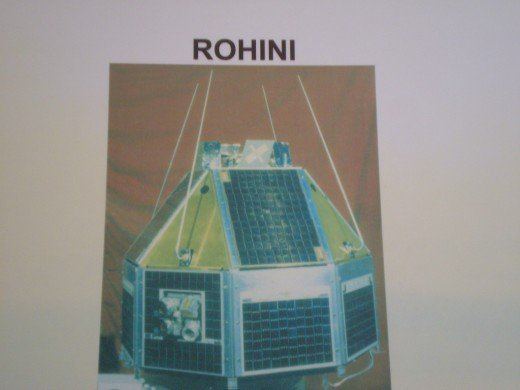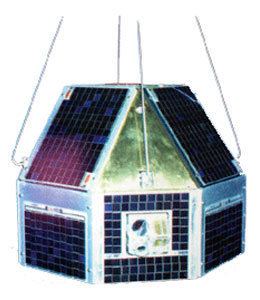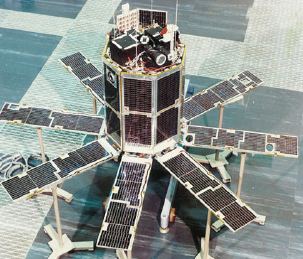Country of origin India Design life 8 Launch vehicle Satellite Launch Vehicle | Operator ISRO Dimensions 360 | |
 | ||
Applications Experimental Satellites Launch mass 30–41.5 kilograms (66–91 lb) Manufacturer Indian Space Research Organisation Similar Aryabhata, Bhaskara, Ariane Passenger Payload, Space Capsule Recovery, INSAT‑1A | ||
Rohini satellite
Rohini is the name given to a series of satellites launched by the Indian Space Research Organisation (ISRO). The Rohini series consisted of four satellites, all of which were launched by the Satellite Launch Vehicle (SLV) and three of which made it successfully to orbit. The series were mostly experimental satellites.
Contents
Rohini Technology Payload (RTP)

It was a 35 kg (77 lb) experimental spin stabilised satellite that used 3W of power and was launched on 10 August 1979 from SDSC. The satellite contained instruments to monitor the launch vehicle. It did not achieve its intended orbit as the carrier rocket SLV was only 'partially successful'.
RS-1

It was also a 35 kg (77 lb) experimental spin stabilised satellite that used 16W of power and was successfully launched on 18 July 1980 from Satish Dhawan Space Centre into an orbit of 305 x 919 km with an inclination of 44.7°. It was the first satellite successfully launched by the indigenous launch vehicle SLV. It provided data on the fourth stage of SLV. The satellite had mission life of 1.2 years and an orbital life of 20 months.
RS-D1

It was a 38 kg (84 lb) experimental spin stabilised satellite that used 16W of power and was launched on 31 May 1981. The launch of the SLV was a partial success as the satellite did not reach the intended height and thus it only stayed in orbit for 9 days. It achieved an orbit of 186 x 418 km with an inclination of 46°. The satellite carried a solid state camera for remote sensing applications (Landmark Tracker) and performed to specifications.
RS-D2

It was a 41.5 kg (91 lb) experimental spin stabilised satellite that used 16W of power and was launched successfully on 17 April 1983 into an orbit of 371 x 861 km and an inclination of 46°. The satellite was in operation (mission life) for 17 months and its main payload, a smart sensor camera took over 2500 pictures. The camera had the capability to take pictures both in visible and infrared bands. After an orbital life of 7 years, the satellite reentered the Earth atmosphere on 19 April 1990.
